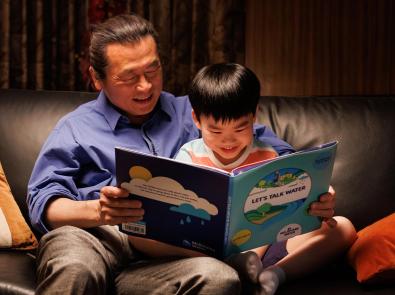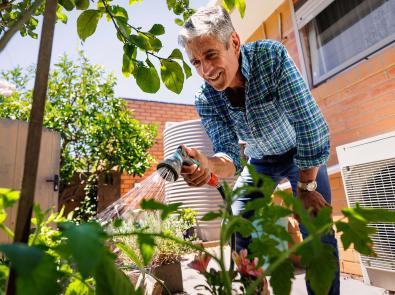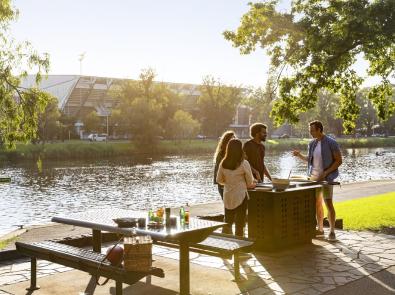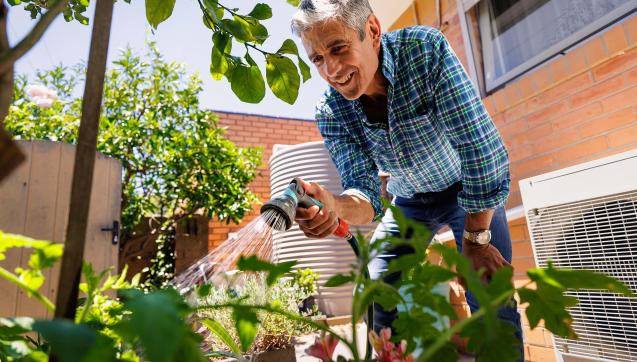Today, Melburnians know that water nourishes, cleans and sustains us and our environment. We are lucky enough to trust that it’s always there when we need it, and it is safely taken away when we don’t.
But our water supply is limited, making the water we already have our most valuable resource.
We are in the decade that matters when our demand for water could outstrip our supply, particularly in the drier years. So we need to protect our water supply to ensure we all have enough water, now and into the future.
So come on, Melbourne, let’s talk water. Let’s talk about water with our friends, family and community. Because having these important conversations today will ensure our city is a great place to live: tomorrow and for generations to come.
Know the basics about our water, so you can help shape and protect Melbourne’s water future.
Where does our water come from?
There’s no new water.
All the earth’s water already exists, and has been moving through the natural water cycle for billions of years.
It is captured in the ground, oceans, lakes, ice, snow and the atmosphere.
Less than 1% of the earth’s water is available to drink.
Around 97% of earth’s water is in our oceans, making it unsuitable to drink. Much of the freshwater on our planet is stored in glaciers and ice caps.
Population growth, urban development and climate change are affecting the quality and quantity of fresh water available globally.
Get to know the water cycle
Learn how water moves between the land, ocean and atmosphere to end up in your tap.
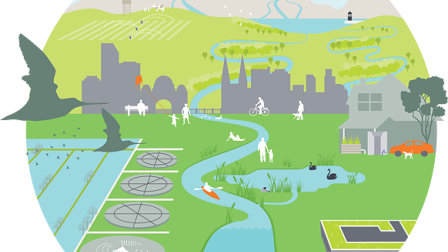
Climate change makes rainfall less reliable.
We’re using more water than what rainfall alone can provide, so the drinking water we have today may not be available (to access) tomorrow.
Less reliable rain can dramatically impact on our water supplies. In fact, during the Millennium Drought we saw storages drop 20% in a single year (2006).
Climate change brings hotter and drier weather. It can also shift rain patterns, causing less rain to fall onto the areas where we need it. A drier climate also has long-term effects on the way rain is absorbed and released into our reservoirs.
You’re sharing the same water with the people next door
Today, over 5 million Melburnians rely on our water storages daily. Every time we turn on a tap to shower, water our gardens or wash our cars, we are tapping into our drinking water supplies.
So as the world changes, we need to adapt and find new ways to protect our water supply.
Here at Melbourne Water, we are dedicated and working hard to ensure that everyone enjoys the best, most reliable water, not just today but tomorrow and for generations to come. We need to:
- make the best use of all water available, and use water more efficiently
- look at alternative water sources such as recycled water, groundwater and stormwater
- continue using our desalination plant to help build and maintain a buffer of water in our storages.
See how we’re taking action to secure our water supply.
Where does our water go?
A reliable sewerage system is essential to our way of life in Melbourne, helping make our city a great place to live. This system also allows us to treat and recycle sewage to help take the pressure off our precious drinking water.
Sewage is around 98% water.
It’s easy to forget about water once it’s flushed down your toilet or drain. This water is known as sewage.
And because sewage contains everything that goes down the drain when you wash your dishes, bathe, throw on a load of washing or flush the toilet, it’s actually around 98% water!
Sewage is recyclable.
Because of its high water content, we’re able to turn sewage into recycled water.
Not all water in Melbourne needs to be drinkable, so we can use recycled water to water parks, sporting fields and gardens. This helps take pressure off our precious drinking water supplies.
Think about the water around you…
Our stormwater system ensures Melbourne is safe from flooding by directing storm and rainwater away from homes into our rivers and creeks. But stormwater also carries with it litter and pollutants. We all have a role to play and responsibility to protect the health of our waterways and wildlife.
Where do the drains in your street end up?
Stormwater pipes carry water that runs off roads, roofs and other paved surfaces. This water carries pollution and litter with it, travelling into local rivers and creeks and eventually the bay.
Unlike sewage, stormwater is often untreated – making it damaging to the environment. This impacts our wildlife, birds and platypuses that live in our waterways.
Our iconic rivers and creeks are the lifeblood of Melbourne’s natural landscape and are part of what makes living here great. We all have a responsibility to keep our rivers and creeks clean and healthy.
